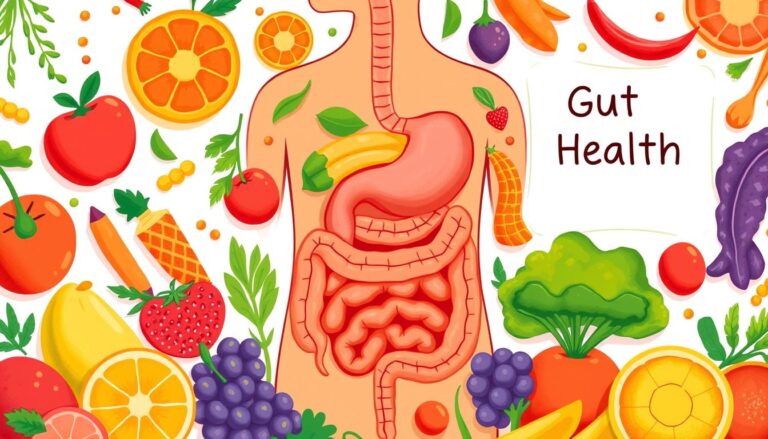How can so many nations show low blood levels of key fatty acids when the science on benefits is strong?
The scale and urgency of this issue are striking. Most people do not get enough EPA and DHA, and that shortfall shows in a low omega-3 index O3I . Reaching an O3I ≥8% links to a lower chronic disease risk, so the gap matters for public health in the United States and beyond.
This article presents a data-driven analysis that ties intake, biomarkers, and outcomes. It draws on the 2024 world map synthesis of 328+ studies and other peer-reviewed data to compare countries with high and low O3I levels.
Expect clear definitions, measured levels since 2016, U.S. intake patterns, dosing guidance to raise O3I, and a look at randomized versus observational evidence. The goal is practical insight for individuals, clinicians, and policymakers across ages and settings.
Key Takeaways
- Most populations show low EPA/DHA status and higher chronic disease risk without improved intake.
- The omega-3 index O3I is the best blood marker ≥8% associates with lower risk.
- Some countries Japan, South Korea, Iceland, Norway have desirable O3I others lag.
- This article synthesizes studies and data to give actionable guidance on raising O3I.
- Findings are based on peer-reviewed research and large population datasets.
Why Global omega-3 deficiency matters now
Low dietary intake of key fatty acids now maps onto rising chronic disease rates in many populations.
Poor EPA and DHA status raises measurable risk. Many people fall below an O3I of 4%, a level tied to higher cardiovascular and neuroinflammatory outcomes. An O3I ≥8% links to lower heart disease risk, so the gap matters at scale.
Recent studies and pooled analysis clarify thresholds and show that insufficient intake disrupts cardiometabolic pathways. These changes also affect mental and perinatal health across age groups.
Biomarker targets make prevention practical: modest intake gains yield measurable population benefits.
Supply shocks, changing diets, and cost barriers reduce seafood access in many countries. That leads to persistent biomarker deficits and higher healthcare burdens.
- Evidence supports clear intervention targets and monitoring.
- Life stages adolescence, pregnancy, older adults have distinct needs.
- Public health action can lower risk gradients as O3I rises.
| Indicator | Threshold | Population impact |
|---|---|---|
| O3I optimal | ≥8% | Lower cardiovascular risk |
| O3I intermediate | 4–8% | Moderate risk action recommended |
| O3I high risk | ≤4% | Elevated cardiometabolic and neuroinflammatory risk |
This article synthesizes cross-country studies to guide clinicians and policy makers. Practical steps now can shift population trajectories and reduce burden over the life course.
Defining the omega-3 index: EPA/DHA in red blood cells as a risk factor
Measuring EPA and DHA in red blood cells gives a reliable signal of long-term intake and tissue status.
O3I thresholds and clinical meaning
The omega-3 index O3I is the percent of EPA plus DHA in erythrocyte membranes. It serves as a validated risk factor for coronary heart disease mortality and links intake to measurable outcomes in this article.
| O3I range | Interpretation | Action |
|---|---|---|
| ≥8% | Optimal | Maintain through diet/supplements |
| 4–8% | Intermediate | Consider intake improvement |
| ≤4% | High risk | Targeted intervention and testing |
Blood fractions and measurement methods
Most studies measure O3I in red blood fractions for stability and prognostic value. Across cohorts, 57% used RBC, 27% used plasma total lipids, and 13% used plasma phospholipids.
Plasma matrices reflect shorter-term changes, while dried blood spot kits offer validated, convenient testing. Laboratory calculation methods vary, so compare results only when the matrix and assay are consistent.
Practical note: Baseline status, diet, and supplement use determine how fast EPA+DHA and O3I levels rise. Screening by age and risk profile can guide personalized dosing and follow-up.
Global omega-3 deficiency: 2024 map update and key shifts
The 2024 map synthesizes far more samples and sharpens country-level comparisons.
Coverage and data density: The new analysis pools 342,864 subjects from 48 countries versus 112,151 from 54 countries in 2016. This larger dataset refines country categorization and raises confidence in cross-country results.
Regional status and spectrum
Countries fall into four categories: desirable >8% , moderate 6–8% , low 4–6% , and very low (≤4%.
Green leaders include Japan, South Korea, Iceland, and Norway. Red-tier nations include Iran, Egypt, India, and Brazil, showing stark disparities tied to diet and market access.
Notable changes since 2016
Several countries moved upward: the U.S., Canada, Italy, Turkey, the U.K., Ireland, and Greece shifted from red to orange. France, Spain, and New Zealand rose from orange to yellow. Finland and Iceland improved to green.
The UK Biobank and other large cohorts drove key reclassifications. Conversely, Nigeria slipped from green to orange, illustrating uneven trends.
- Practical implication: Raising an O3I from ~4% to ≥8% typically needs about 1.4 g/day EPA+DHA, achievable via oily fish or supplements.
- Country-level results can hide regional and age-related variation representative surveys matter for planning.
Takeaway: The 2024 map shows progress in parts of North America and Europe but overall status remains suboptimal, guiding clinicians and policymakers on where testing and interventions are most needed.
Undersampled regions and data gaps limiting global analysis
Sampling is heavily skewed toward a few high-income regions, leaving many countries underrepresented in pooled analysis.
Almost half of all participants came from North America 49% and Europe 43%. That means 92% of the data derive from roughly 15% of world countries. Asia, Africa, and Central/South America contributed under 10% of the studies included.
South America data came mainly from Brazil. African reports came from Tunisia, Egypt, Nigeria, and South Africa. Only Canada and the United States had representative population surveys Japan, China, France, the U.K., Canada, and the U.S. each had >5,000 participants.
Consequences for interpretation:
- Skewed sampling biases pooled estimates and limits generalizability to many countries.
- Thirty countries had fewer than 1,000 participants 14 had under 200, so national status remains uncertain.
- Age, diet, and socioeconomic differences in undersampled regions may change risk profiles and response to DHA or other fatty acid interventions.
| Gap | Example countries | Implication |
|---|---|---|
| Low study count | Many Asian, African nations | High uncertainty in national estimates |
| Few representative surveys | Outside Canada & U.S. | Limits policy relevance |
| Small sample sizes | 30 countries <1,000 | Weak trend and subgroup analysis |
Action items for authors and funders: Support standardized RBC-based O3I measurement, larger age-stratified samples, and data-sharing to improve research and policy decisions.
United States spotlight: intake, omega-3 levels, and status
Examining U.S. consumption and biomarker data shows why policy and clinical action matter.
The Dietary Guidelines and AHA recommend two fish servings per week ~250 mg/day EPA+DHA. Yet mean U.S. adult fish intake is about 4 oz/week, with only ~1 oz/week coming from high-omega-3 fish. That gap maps to lower population status.
Fish intake shortfalls vs. Dietary Guidelines targets
Diet-only DHA averages 63 mg/day including supplements rises to 72 mg/day. EPA is ~23 mg/day from food and 41 mg/day with supplements. Both are well below the 250 mg/day benchmark.
Representative surveys and O3I trends in the U.S. population
National surveys in the U.S. and Canada provide population-level data. Since 2016, the U.S. improved from red to orange on the 2024 map, reflecting modest gains in intake and levels.
Practical implications: Heterogeneity by region, age, and diet means one-size-fits-all guidance has variable effects. Increasing oily fish, targeted supplementation, and food fortification are realistic strategies. Public procurement in schools, military, and hospitals can shift consumption toward DGA targets.
Clinicians should consider testing higher-risk groups, counsel on achievable changes, and monitor levels over time. Closing the consumption gap yields measurable improvements in blood levels and health outcomes.
From intake to index: how much EPA+DHA is needed to lift O3I
Knowing how much EPA+DHA moves the index is the key step from advice to results.
Practical dosing
Recommendation: For most adults, aim for 1,000–1,500 mg/day EPA+DHA as triglycerides for at least 12 weeks to reach an O3I ≥8%.
Scoping reviews show interventions ranged 100–4,400 mg/day and lasted 3 weeks to 1 year. Moving from 4% to 8% often needs about 1.4 g/day.
Formulation and bioavailability
Triglyceride TAG and re‑esterified TAG forms absorb better than ethyl esters, especially with meals. That improves real-world response to fish oil and other oil products.
Time course and baseline dependency
Response is dose- and time-dependent. Lower baseline levels yield larger absolute gains. People nearer sufficiency may need higher doses or longer courses.
Measure, adjust, and maintain don’t assume intake equals status.
- High-dose protocols up to 4.4 g/day exist for clinical use routine targets remain 1–1.5 g/day.
- Factors that affect response: adherence, co-ingestion of fat, body weight, age, and metabolic state.
- Test after 12 weeks and adjust dosing once optimal, a lower maintenance dose can suffice.
| Goal | Typical dose | Timeframe |
|---|---|---|
| Raise O3I to ≥8% | 1,000–1,500 mg/day | ≥12 weeks |
| Rapid clinical change | Up to 4,400 mg/day | Varies by protocol |
| Maintain | Lower dose per diet | Ongoing |
Randomized controlled vs. observational evidence: aligning signals
Randomized trials test causality while large cohort studies reveal long-term associations across populations.
Randomized controlled designs limit bias and assess causality by assigning dose, formulation, and duration. They are best for proving whether a given treatment changes clinical endpoints. Large observational studies, by contrast, offer rich real-world data on exposure, age groups, and long-term risk patterns.
Interpretation is complicated by heterogeneity in dose, duration, formulation, and baseline status. Trials differ in EPA/DHA amount, ethyl-ester versus triglyceride forms, and follow-up time. These factors change how much the index shifts and whether clinical results appear.
Still, consistent signals emerge: higher EPA+DHA exposure raises blood levels and lowers specific risks when sufficiency thresholds are reached. Some null RCTs likely enrolled participants with near-sufficient baseline intakes or used inadequate dosing or duration to move the index.
Biomarker-anchored trials that measure change in the omega-3 index strengthen causal links between treatment, mediator, and outcome. Meta-analysis and pooled data further clarify dose–response and identify subgroups by age and baseline status.
- Standardize reporting of blood matrices and O3I to improve comparability.
- Design trials to reach validated thresholds so clinical effects can be detected.
- Combine trial and real-world evidence to guide population targets and personalized care.
Aligning trial design with biomarker thresholds improves power to detect meaningful reductions in risk.
Health implications: depression, preterm birth, and chronic disease risk
Country-level analyses reveal dose–response relationships between long-chain marine fats and key maternal and mental health outcomes.
Quantitative thresholds: At the population level, MDD prevalence declines up to about 1,000 mg/day of LC epa dha intake. Preterm birth rates fall up to roughly 550 mg/day.
One standard-deviation increase ≈380 mg/day linked to a 0.50 per 100 reduction in MDD and a 1.5 per 100 reduction in PTB after adjustment.

Mechanisms that support plausibility
EPA and DHA modulate neuroinflammation and neurotransmission, affecting serotonin and dopamine pathways. They also alter prostaglandin balance and support placental trophoblast health, influencing labor timing.
Public-health and clinical translation
- Policy targets: Aim for the country-level thresholds to reduce population disease burden.
- Screening of O3I helps align intake with outcome targets and guides supplementation for pregnant women and high-risk age groups.
- Improvements in levels may also lower broader chronic disease risk, reinforcing the need for integrated care pathways.
Monitoring and targeted supplementation link intake to measurable reductions in depression and preterm birth.
Population risk stratification: age, sex, and women’s health considerations
Biology and life stage change how the body handles long-chain fatty acids and how quickly blood levels respond.
Why age and sex matter
Age and sex alter metabolism, body composition, and hormone-driven lipid handling. These differences affect how fatty acids distribute in tissues and how fast the omega-3 index rises after intervention.
Women and pregnancy: intake sufficiency and outcome links
Pregnancy creates higher needs for dha and other long-chain fatty acid substrates. Meta-analysis evidence shows prenatal supplementation reduces preterm birth when intake raises maternal levels above relevant thresholds.
Prioritizing maternal status yields measurable neonatal benefit.
Participant-level modifiers
Baseline status, body weight, diet, and adherence drive the magnitude and speed of change. Trials report that participants with low baseline values gain the most in 8–12 weeks, while heavier adults often need higher dosing.
- Adolescents: variable intake and rapid growth change needs by age.
- Reproductive-age adults: pregnancy planning and mood outcomes merit screening for women.
- Older adults: slower metabolic turnover may require sustained dosing to shift levels.
Clinical actions: Screen higher-risk groups, tailor counseling by age and baseline, and coordinate care across obstetrics, cardiology, and geriatrics to reduce risk.
| Group | Key consideration | Typical approach |
|---|---|---|
| Adolescents | Growth-related demand variable diet | Diet first test when risk or low intake |
| Reproductive-age women | Pregnancy planning mood and PTB risk | Prioritize testing and prenatal supplementation |
| Older adults | Comorbidity and slower response | Longer courses monitor levels |
This article recommends capturing participant characteristics in future studies to refine stratified guidance and ensure equitable outcomes across the population.
Dietary sources vs. supplements: fish, fortified foods, and fish oil
Meeting target blood levels requires realistic choices across foods and products.
Oily fish patterns and feasibility
Two fish servings weekly roughly equal 250 mg/day EPA+DHA, yet typical U.S. intake is about half that.
High-EPA/DHA options: salmon, mackerel, sardines, herring, and trout deliver the most per serving.
Plan simple menus: one 4–6 oz salmon meal and one canned sardine or mackerel serving per week can meet the guideline.
Choosing supplements to reach red blood cell targets
When diet falls short, evidence-based supplements bridge the gap.
- Select products that list EPA and DHA per serving and aim for 1,000–1,500 mg/day to reach ≥8% O3I in ~12 weeks.
- Prefer triglyceride or re-esterified forms for better absorption look for third‑party quality seals.
- Liquid fish oil and micro-emulsifying systems may help people with absorption issues or higher needs.
Combining modest increases in fish consumption with a measured supplement often gives the most reliable path to optimal status.
Practical tips: take doses with a meal, split daily servings, and choose flavored or enteric-coated options to reduce aftertaste. Consider fortified staples eggs or milk for modest boosts where cultural or cost barriers limit fish or supplement use.
Age and life stage: children, pregnant women, and older adults have different safety and dose needs tailor choices and confirm with testing when possible.
Track progress: routine intake logs and, where available, RBC testing validate that dietary change or a supplement is producing the desired rise in levels.
Market and use trends: omega-3 ingredients volume and value
Industry data for 2023 show modest volume growth but notable value gains. Global ingredient volume reached 124,480 metric tons in 2023, a 1.4% increase versus 2022. Market value exceeded $2 billion, up 22.5% from roughly $1.7 billion the prior year.
Ingredient supply growth and consumer adoption
Supply, product design, and channels together shape access to oils and finished supplements.
Consumer adoption and innovation new delivery systems, algal sources, and fortified staples—drive product mix and pricing. Wider distribution raises availability but affects affordability across different countries and age groups.
- Market signals: volume increases ease supply constraints value growth funds innovation.
- Formulation choices follow real-world use patterns and dosing needs noted in this article and study reports.
- Transparency, quality standards, and collaboration among authors, industry, and public health ensure products match evidence-based acid and dha targets.
Stronger markets should translate into equitable access and better alignment of products with proven dosing and adherence.
Methodological notes: studies included, blood matrices, and baselines
This methods note explains which studies were accepted and why they shape the final synthesis. The final analysis drew on 328 studies with blood samples collected from 2000 onward. That scope gives breadth but also creates heterogeneity in assay methods and reporting.

Study selection required human cohorts, clear reporting of matrix type, and extractable O3I or EPA/DHA results. The distribution of matrices was: red blood cells 57%, plasma total lipids 27%, plasma phospholipids 13%, plus some whole blood and plasma phosphatidylcholine reports.
Baseline status drives how fast levels change many cohorts began with O3I below 8%, and several were ≤4%.
- Variability in lab calculation and reporting limits cross-study pooling harmonization is needed.
- Representative surveys existed only in Canada and the U.S., so national estimates remain uncertain elsewhere.
- Authors should report matrix, assay method, baseline by age and sex, and DHA/EPA values to aid future review.
Bottom line: Methodological rigor and shared protocols will strengthen research translation and let clinicians and policymakers benchmark outcomes against validated thresholds.
Global omega-3 deficiency: drivers, barriers, and equity
Structural barriers in many countries shape who gets enough long-chain marine fats and who does not.
Low seafood availability, high cost, and supply chain limits reduce consumption in many low-resource settings. Countries with the lowest intakes cluster in Africa, South-Central Asia, and Central America. By contrast, higher intakes occur in Southeast Asia and North Atlantic Europe.
The data show the scale of the problem: 158 of 184 countries had LC intakes below 550 mg/day, and 53 countries reported intakes under 170 mg/day. These shortfalls translate into a population-level rise in cardiometabolic and perinatal risk where diets lack marine sources.
Structural drivers include limited fisheries, cold-chain gaps, cultural preferences away from oily fish, and low purchasing power. Evidence links these barriers to persistent low status and unequal health effects across regions.
- Culturally tailored food-based solutions and fortified staples can raise intakes where fresh fish is scarce.
- Age-related vulnerabilities matter: early development and older adults both need attention to prevent lasting harm.
- Community-informed programs that pair education with affordable options—regional fish, fortified eggs, or algal oil—work best.
Addressing supply, cost, and culture together is essential to close gaps and reduce inequities.
| Driver | Impact | Target action |
|---|---|---|
| Limited seafood access | Low DHA and EPA intakes | Local aquaculture fortification |
| Cost and supply chains | Unequal population status | Subsidies procurement in schools |
| Cultural preferences | Low fatty acid intake | Culturally adapted products and education |
| Age vulnerability | Higher lifelong risk | Targeted programs for infants and elders |
This article calls for monitoring frameworks and multisector collaboration from fisheries policy to nutrition assistance to ensure interventions reach high-need groups. Funders should prioritize projects that reduce inequities and build local capacity for sustained improvement.
Policy levers and public health strategies for raising omega-3 status
Public health tools from procurement to fortification offer concrete ways to raise blood levels of long-chain marine fats.
Align guidance with measurable targets. National dietary advice should reference intake needed to reach an O3I ≥8% roughly 1,000–1,500 mg/day EPA+DHA for ≥12 weeks . Two fish servings weekly ~250 mg/day are a baseline but often fall short of clinical goals.
Food-based and fortification approaches
Fortifying staples eggs, milk, poultry, or processed items has raised blood levels modestly in trials. Use commonly consumed vehicles to reach broad groups and monitor impact with representative testing.
Clinical pathways and program design
Screening, dose guidance, and follow-up should sit inside primary care and maternal services. For many individuals, supplements or higher-dose oil products ≥1,000 mg/day are needed to hit biomarker targets within months.
| Strategy | Target | Evidence |
|---|---|---|
| Dietary guidance | 2 fish servings/week (~250 mg/day) | Population-level baseline |
| Fortification | Staple foods | Modest O3I gains in trials |
| Clinical programs | 1,000–1,500 mg/day for 12+ weeks | Effective to reach ≥8% O3I |
Policy essentials: set measurable intake and status goals, require quality labeling, ensure third‑party testing, subsidize access for low-income groups, and tailor messages by age. Regular review of the evidence and cross-sector coordination will translate targets into sustained population improvements.
Research agenda: standardizing O3I reporting and closing regional gaps
A coordinated research agenda can turn scattered measurements into actionable public health guidance. This article calls for common standards so pooled analysis yields clear answers for clinicians and policy makers.
Make reporting uniform across blood matrices RBC, plasma total lipids, and plasma phospholipids with transparent assay methods. That step will let future studies combine results without guesswork.
Prioritize randomized controlled trials and well‑designed observational research that measure O3I change alongside clinical endpoints. Fund sampling frameworks that produce robust national estimates in underrepresented regions.
- Preregister protocols, publish null results, and share de‑identified data so authors build cumulative evidence.
- Harmonize age and sex stratification to capture how fatty acid needs vary by age and life stage.
- Create living review infrastructures to integrate new studies and update guidance continuously.
- Include mixed‑methods work to study adherence, acceptability, and implementation barriers.
Standardized metrics and coordinated funding will close data gaps and make interventions more effective.
How individuals can assess and improve omega-3 status
Simple testing and a tailored plan let people raise their EPA and DHA levels reliably.
Testing options
Dried blood spot kits and clinic-based venous tests both report the omega-3 index O3I . At‑home kits are convenient and valid for most adults. Clinic tests may add counseling and faster follow-up for higher-risk people.
Testing options: blood spots and interpreting O3I results
Use test results to compare against the ≥8% target. Values ≤4% suggest rapid action 4–8% calls for stepped improvement. Always record baseline numbers before changing diet or starting supplementation.
Personalized dosing based on baseline and body weight
Start with a plan: assess baseline, pick a triglyceride or re‑esterified TAG product, set ~1.0–1.5 g/day EPA+DHA for 12–16 weeks, then retest.
- Adjust dose upward for higher body weight or very low baseline values.
- Older adults may need longer courses younger people often respond faster.
- Take with meals to boost absorption and reduce GI side effects.
Measure, act, and retest — that cycle turns intake into lasting status gains.
| Test type | Where | When to choose |
|---|---|---|
| Dried blood spot | At home | Routine screening, easy follow-up |
| Clinic venous RBC | Medical lab | High-risk, pregnancy, clinical decisions |
| Point-of-care snapshot | Clinic device | Quick check, not always RBC-based |
Food-first approaches work for many supplements are efficient when diet won’t meet targets. Track side effects, use calendar reminders, and review progress with a clinician to set a maintenance dose that keeps levels within the optimal range.
Conclusion
Evidence from trials and surveys points to clear, measurable ways to improve blood fatty acid status.
Key results: despite modest improvements in some countries on the 2024 map, many populations and age groups remain below target O3I levels linked to lower disease risk. Measured increases matter: raising O3I to ≥8% associates with reduced cardiovascular risk, lower depression rates, and fewer preterm births.
Practical guidance: aim for ~1.0–1.5 g/day EPA+DHA for ≥12 weeks to reach optimal status in most adults, then tailor a maintenance dose based on baseline and weight. Trials and observational research converge on these actionable targets.
Stakeholders clinicians, public health leaders, industry authors, and policymakers should align on standardized red blood cell and plasma measurement, quality fish oil products, and equitable access through diet, supplements, or fortification.
Final call to action: measure, increase intake where needed, and maintain optimal levels to turn strong evidence into better health for women, families, and communities worldwide.





